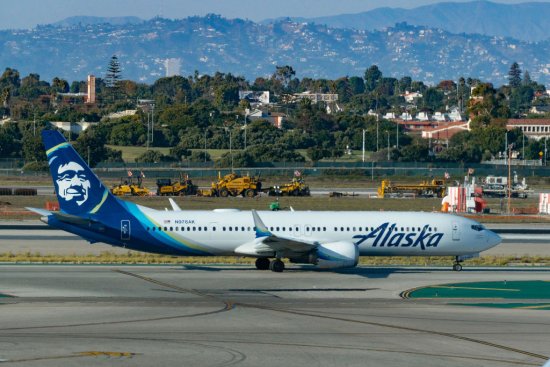
The Federal Aviation Administration temporarily grounded “certain Boeing 737 MAX 9 aircraft” following Alaska Airlines' emergency landing.
The Federal Aviation Administration temporarily grounded “certain Boeing 737 MAX 9 aircraft” on Saturday, after a plug door on one of the planes became detached and blew off during an Alaska Airlines flight from Portland, Ore. to Ontario, Calif. The plane was forced to return to Portland and make an emergency landing on Friday evening. No serious injuries were reported, according to Port of Portland’s media team. Alaska Airlines announced the grounding of its Boeing 737-9 aircrafts hours after the incident.
The following day, the FAA announced it was ordering immediate inspections of certain Boeing 737 MAX 9 planes before they could return to flight. The temporary grounding applies to aircrafts operated by U.S. airlines or in U.S. territory, and will affect approximately 171 airplanes worldwide, the agency said. The inspection of each aircraft will take around four to eight hours, according to the regulator.
[time-brightcove not-tgx=”true”]Federal regulators are investigating what caused the plug door to detach and blow out on a plane that was delivered to Alaska Airlines two months ago.
Flight 1282, carrying 171 passengers and six crew members, was forced to make an emergency landing on Friday after a mid-cabin plug door––a specific panel of the fuselage near the rear of the aircraft––blew out just minutes into the flight, according to Alaska Airlines and the National Transportation Safety Board (NTSB). Videos posted on TikTok by people who said they were on the flight showed a hole in the side of the aircraft and passengers wearing oxygen masks.
“We are very fortunate here that this didn’t end up in something more tragic,” NTSB Chair Jennifer Homendy said in a news conference in Portland on Saturday. She extended “deepest sympathies to those that experienced what I imagine was truly terrifying.”
The incident occurred when the plane was at around 16,000 ft.––not cruising altitude, Homendy said. No passengers were seated in the two seats beside the blown-out door, she said, with two seats missing headrests and one its back after the flight because of the depressurization.
The flight departed Portland just after 5 p.m., and made a loop before returning to the airport around 20 minutes later, according to flight tracking websites FlightRadar24 and FlightAware.
The Port of Portland said Flight 1282 “landed safely” at Portland International Airport in an email to TIME. The fire department responded to the scene to assess minor injuries and there was one medical transport called, Port of Portland’s media team said. No serious injuries were reported.
Alaska Airlines said in a statement on its website that “the safety of our guests and employees is always our primary priority, so while this type of occurrence is rare, our flight crew was trained and prepared to safely manage the situation.”
CEO Ben Minicucci said in a follow-up statement that “my heart goes out to those who were on this flight––I am so sorry for what you experienced.”
Minnucci announced the airline decided to temporarily ground its fleet of 65 Boeing 737-9 planes as a precaution and anticipated all inspections would be complete “in the next few days.” As of Saturday morning, more than a quarter of the grounded aircrafts had been inspected, but after the FAA’s order, the airline pulled 18 planes, which had already been inspected and put back in service, to consult with the FAA if further maintenance was needed.
As of 4 p.m. Saturday, the airline had canceled 160 total flights, affecting 23,000 passengers.
Alaska Airlines “deeply apologizes” to those impacted, advising they can go to alaskaair.com for more information. The airline has implemented a flexible travel policy and is allowing customers to change, cancel or rebook flights.
The airline said it was working with Boeing and regulators to understand what happened.
Reuters reported on Sunday that aircraft parts manufacturer Spirit AeroSystems made the fuselage that blew out on the plane.
In response to an inquiry about the report, Boeing referred TIME to Spirit AeroSystems, who did not immediately respond to a request for comment.
The Boeing Airplanes company said via social media: “We agree with and fully support the FAA’s decision to require immediate inspections of 737-9 airplanes with the same configuration as the affected airplane.”
Videos posted on social media by people who said they were on the affected plane on Friday show them wearing oxygen masks.
In one video, the poster commented that it was “literally the scariest moment of my life.” The video captures a recording of someone speaking over the plane’s intercom to say that “medical personnel are treating people who are injured.”
“Everyone was okay thankfully and no one was sitting in the window seat that burst open,” the social media user wrote in the video.
In light of concerns, NTSB chair Homendy reassured the public about American airline safety.
“We have the safest aviation system in the world,” she said during the news conference. “We are the global gold standard for safety around the world, but we have to maintain that standard.”